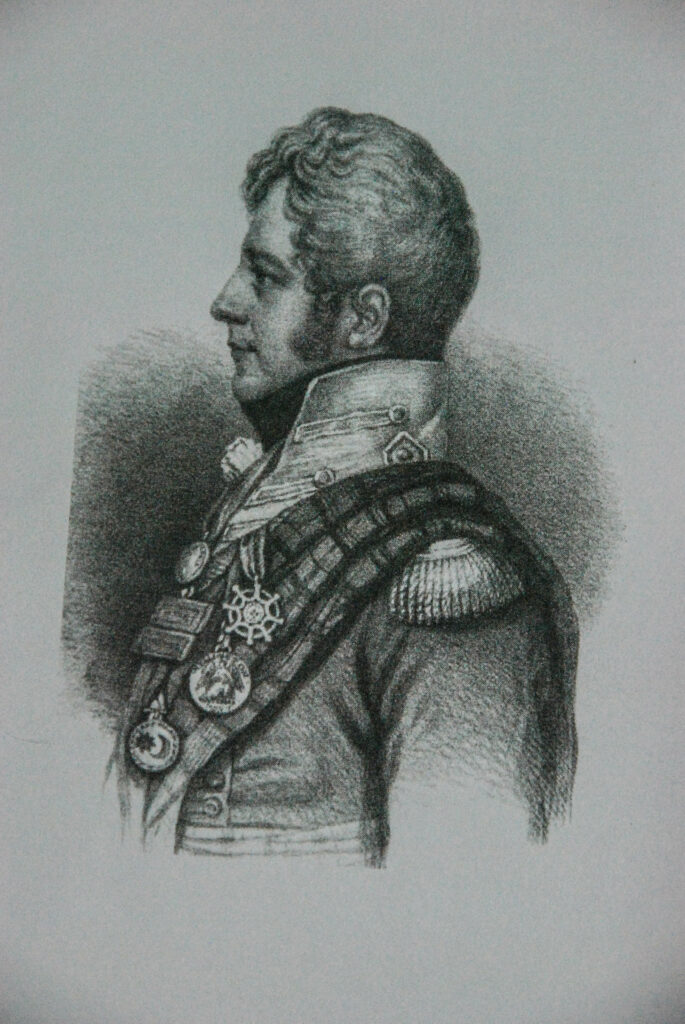The museum has six objects in its collection that once belonged to Colonel John Cameron of Fassifern (or Fassiefern), these include a childhood toy, a love token, and objects associated with his military service.
Cameron was a cousin of the Camerons of Lochiel and educated partly at the grammar school in Fort William, but also by a private tutor. An object relating to Cameron’s early life is part of the museum’s collection and displayed in our Highland Life gallery. It is battledore and shuttlecock that Cameron would have played with in his youth. The game of battledore was an early version of badminton played using small rackets (battledores) and shuttlecocks. The object of the game is for players to bat the shuttlecock from one person to the other as many times as possible without allowing it to fall to the ground. The museum’s battledore is made from wood with a pigskin head stretched over the frame and the shuttlecock is made from leather with white feathers fixed around the top.
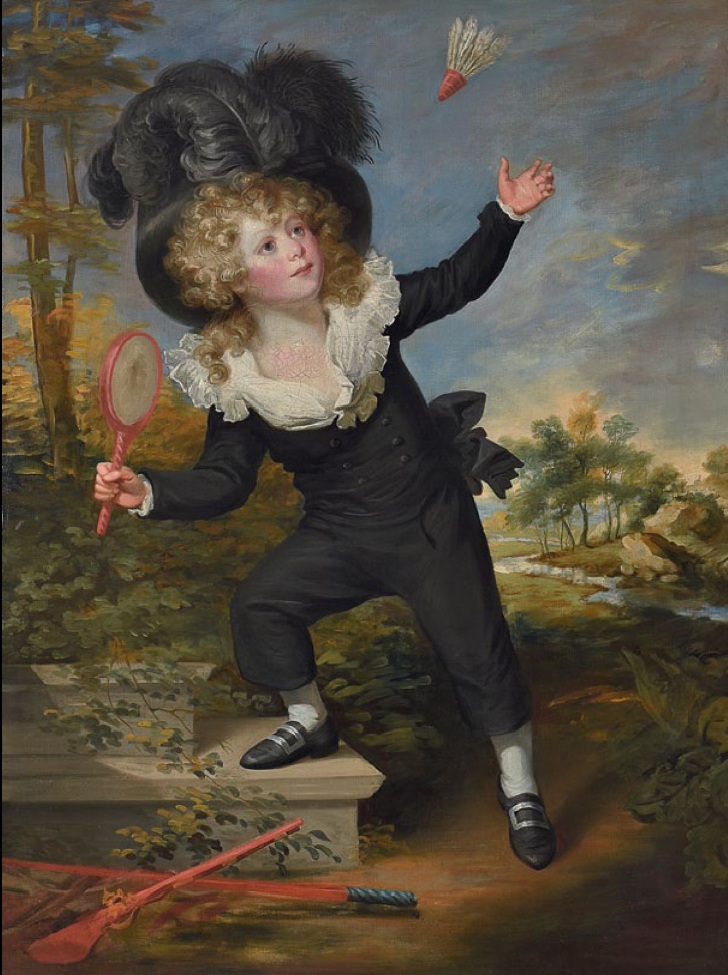
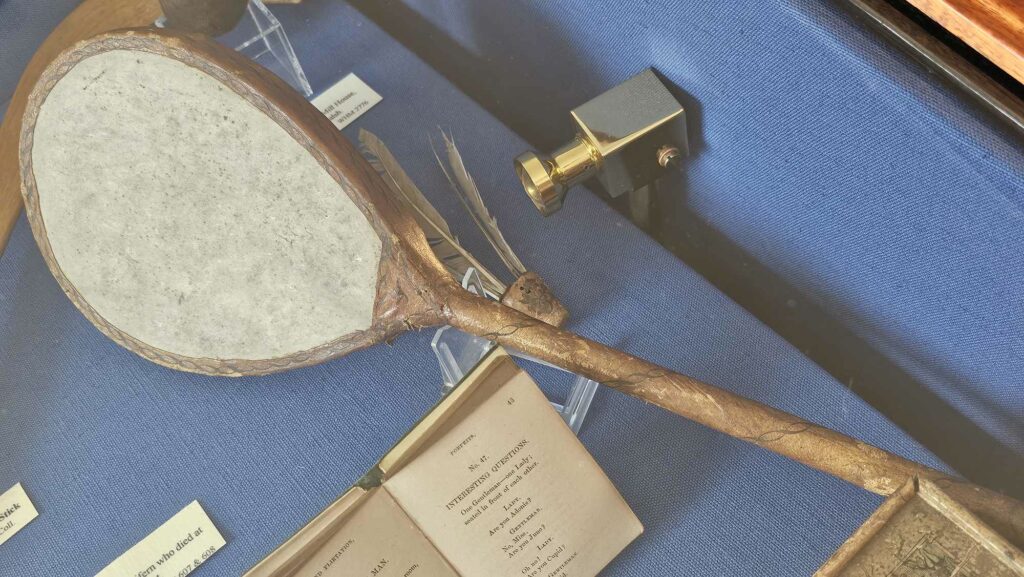
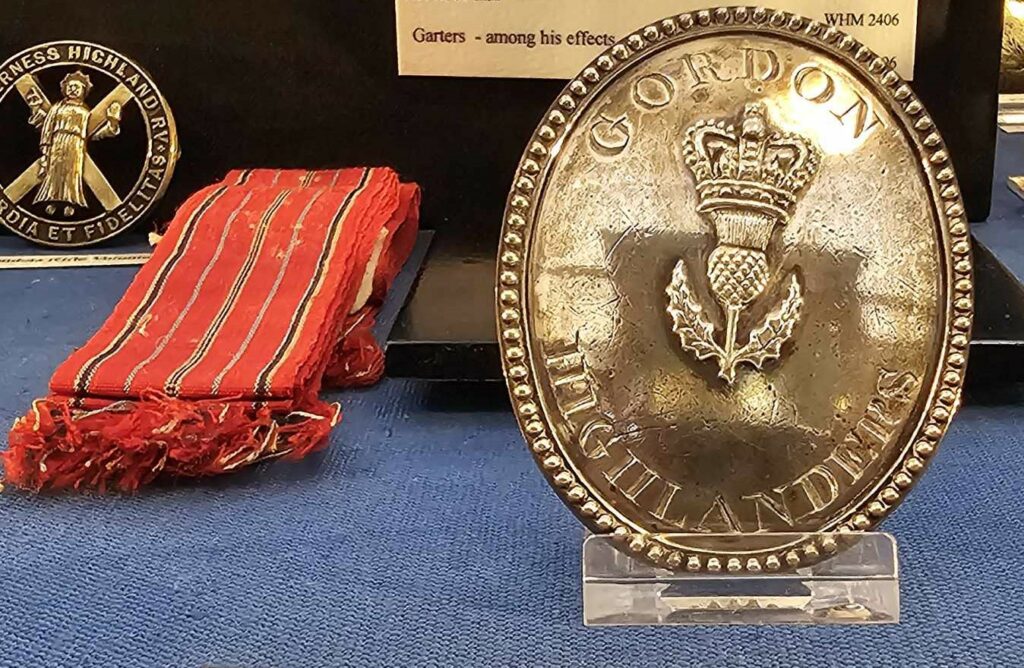
John Cameron left Lochaber to attend the University and King’s College, Aberdeen. After the outbreak of war with France, he volunteered for military service and procured a commission. In February 1794 he joined the 92nd Gordon Highlanders as one of the new regiment’s original officers. On display in the museum’s Military gallery is a Gordon Highlander’s silver cross belt plate that once belonged to Cameron. This object is the 1794 pattern which was worn up to early the 1800s. It is oval, with a beaded edge and is decorated with a thistle surmounted by crown.
In 1798 Cameron served in the south of Ireland. It was there he is said to have fallen in love with a young Irish lady at Kilkenny, but the match was broken off in accordance with his father’s wishes. A love token in the museum’s collection likely relates to this liaison; this is a hussif or “housewife” made from tartan silk. Hussifs date to 18th century Britain and consist of a rolled-up piece of fabric containing essential sewing items. This is an early example of an early military hussif, but by the 20th century had become an integral part of a soldier’s kit. John Cameron’s hussif contains a pebble, pieces of stalk, speedwell seeds sewn in, with a tiny padlock and a letter. The letter reads “Col. Cameron, 92 Regt. Foot. Sir: I am all gratitude for your former kindness. When I heard the regt. was leaving town I was more troubled than I can express. I am ever bound to pray for your welfare, as a token of my gratitude I send a small bag, if you should chance to go to battle, or an (..) of honour, it will be no great trouble to put it round your neck. I trust it will save you from your enemy, which is the wish of – your humble servant, Unity Mathews”. It was gifted by Unity Mathews to the Colonel.
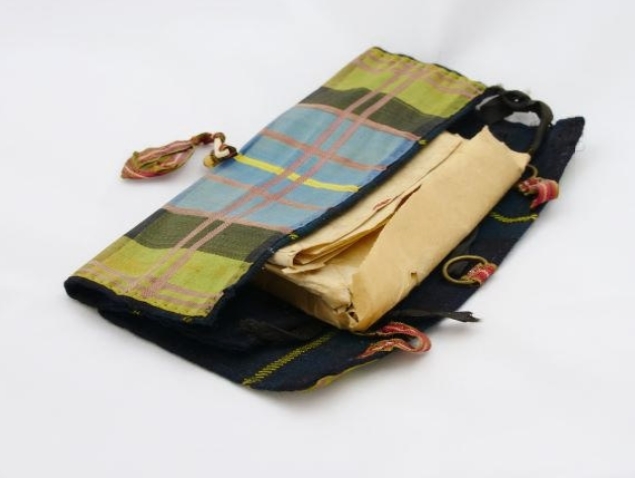
After serving in Ireland, Cameron went on to have a distinguished career serving in Europe in the first decade of the 19th century. On 4th June 1814 he was promoted to Colonel in the Gordon Highlanders, but within a fortnight he was dead, killed at the Battle of Quatre-Bras on 16th June, a preliminary battle before the Battle of Waterloo. Around 25,000 allied troops fought against 24,000 French troops during the conflict, with the Highland regiments purportedly dressed in the kilt with red tunics and tall black ostrich feather caps.
Colonel John Cameron of Fassiefern was mortally wounded leading the 92nd Highlanders and died the next day. He was buried beside the Ghent road, during a heavy rainstorm, by his foster brother, his personal servant during his military service, Private Ewen McMillan, and other soldiers from the 92nd. At the request of his family, Cameron’s body was disinterred and brought back to Lochaber in a man-o-war. He was re-buried at Corpach, just west of Fort William. In recognition of his son’s military service, including throughout the Peninsular War, the King made Cameron’s father a baronet. Reports of the manner of his demise vary. One account says that record he was mortally wounded by a French sniper in the upper storey of a wayside house. He was carried to the rear on a cart and died near village of Waterloo that night. His last words were: ‘I trust my dear country will think I have done enough; I hope she will think I have served her faithfully’. However, an account in Bygone Lochaber by Somerled MacMillan claims that local tradition claims Cameron “was shot by one of his own men who had been flogged earlier that day for some petty offence” and turned to his foster brother and said, “I’m afraid it wasn’t the enemy who fired that shot.” It is claimed soldiers protected the guilty soldier so his identity was not revealed.
Among other objects in the museum’s collection on display in the military gallery at the museum are items relating to Cameron’s death. A hank of reddish hair in a glazed frame taken as a memento on his death has been mounted in a glazed frame. The inscription reads “A lock of hair cut from Sir John Cameron’s head after he fell at Quatre Bras June 16th 1815.”. There is also a piece of oak set on a wooden plinth with a silver plaque which reads “piece the oaken door of the farmyard at Quatre Bras. Close to which the 92nd Highlanders under Lt Col. Cameron of Fassifern was engaged on 16th June 1815.” These are displayed in the Military gallery alongside a pair of unused red garters with thin blue and yellow stripes found among Cameron’s belongings after he died.
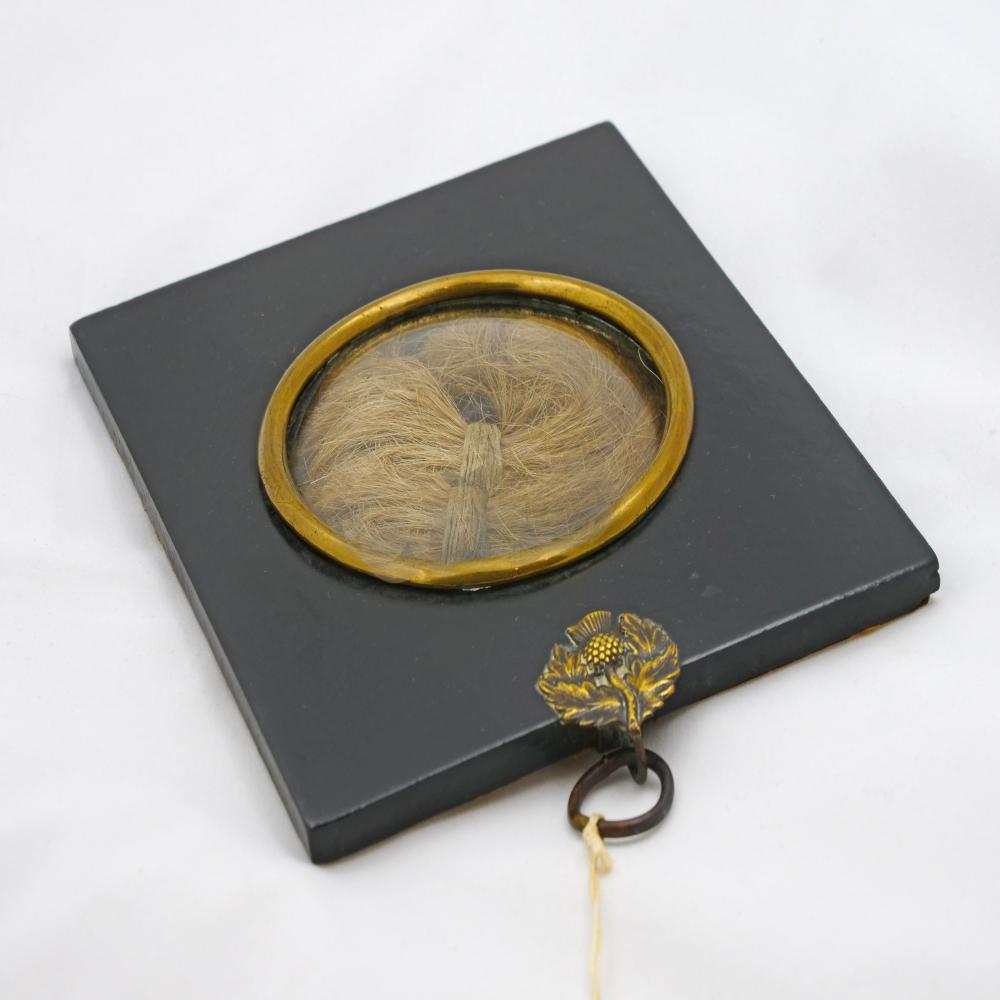

At the request of the family, however, Cameron’s remains were disinterred soon afterwards, brought home in a man-of-war, and, in the presence of 3000 highlanders, were laid in Kilmallie churchyard, where a tall obelisk, bearing an inscription by Sir Walter Scott, marks the site of his grave. Another account in Bygone Lochaber details the arrival of Cameron’s remains at Kilmallie preserved in a cask of wine. It was customary for the sailors to receive a dram, but when this was not provided, they drank the wine which had been used to preserve Cameron’s remains on its journey from Belgium instead!
Vanessa Martin
Curator Manager
West Highland Museum
Sources / Further Reading:
- com https://www.badmintonspeak.com/badminton-history/battledore-history/
- com. “Battle of Quatre Bras.” https://www.britishbattles.com/napoleonic-wars/battle-of-quatre-bras/
- David, Saul. All the King’s Men: The British Redcoats in the Era of the Sword and Musket. Penguin, London: 2013
- MacMillan, Somerled. Bygone Lochaber. K & R Davidson Ltd, Glasgow: 1971
- Turner, Chris. “Cameron, John (1771-1815)”. Oxford Dictionary of National Biography. Cameron, John (1771–1815), army officer | Oxford Dictionary of National Biography (oxforddnb.com)y
- War Memorials Register. Imperial War Museum. Colonel John Cameron of Fassifern | War Imperial War Museums (iwm.org.uk)
- The Waterloo Association. “16th of June: Battle of Quatre Bras.” https://www.waterlooassociation.org.uk/2018/06/05/16th-of-june-battle-of-quatre-bras/
- West Highland Museum collections information systems

